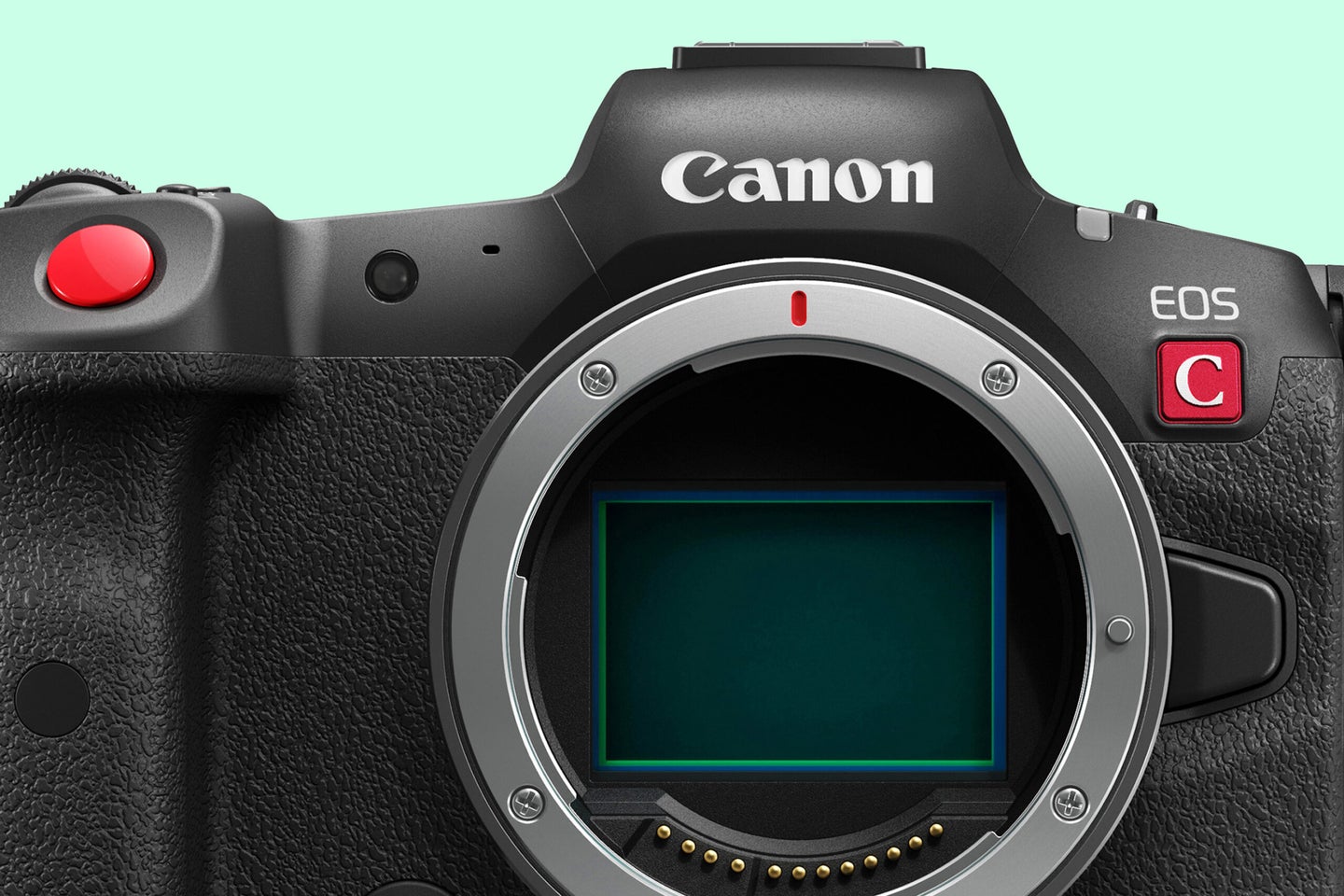
Canon has announced the new EOS R5 C, a full-frame camera that bridges the gap between the brand’s standard EOS line of mirrorless cameras, and the more filmmaking-focused EOS Cinema line.
From a still photography perspective, the EOS R5 C and Canon EOS R5 are essentially identical in their abilities. But from a video standpoint, the EOS R5 C is far more capable thanks to a large cooling fan on the back, which unlocks unlimited 8K capture. The EOS R5 C also inherits an interface from the EOS Cinema line (when in video mode), along with several other nifty cinema-centric features and shooting modes. Let’s take a closer look.
Unlimited 8K video capture
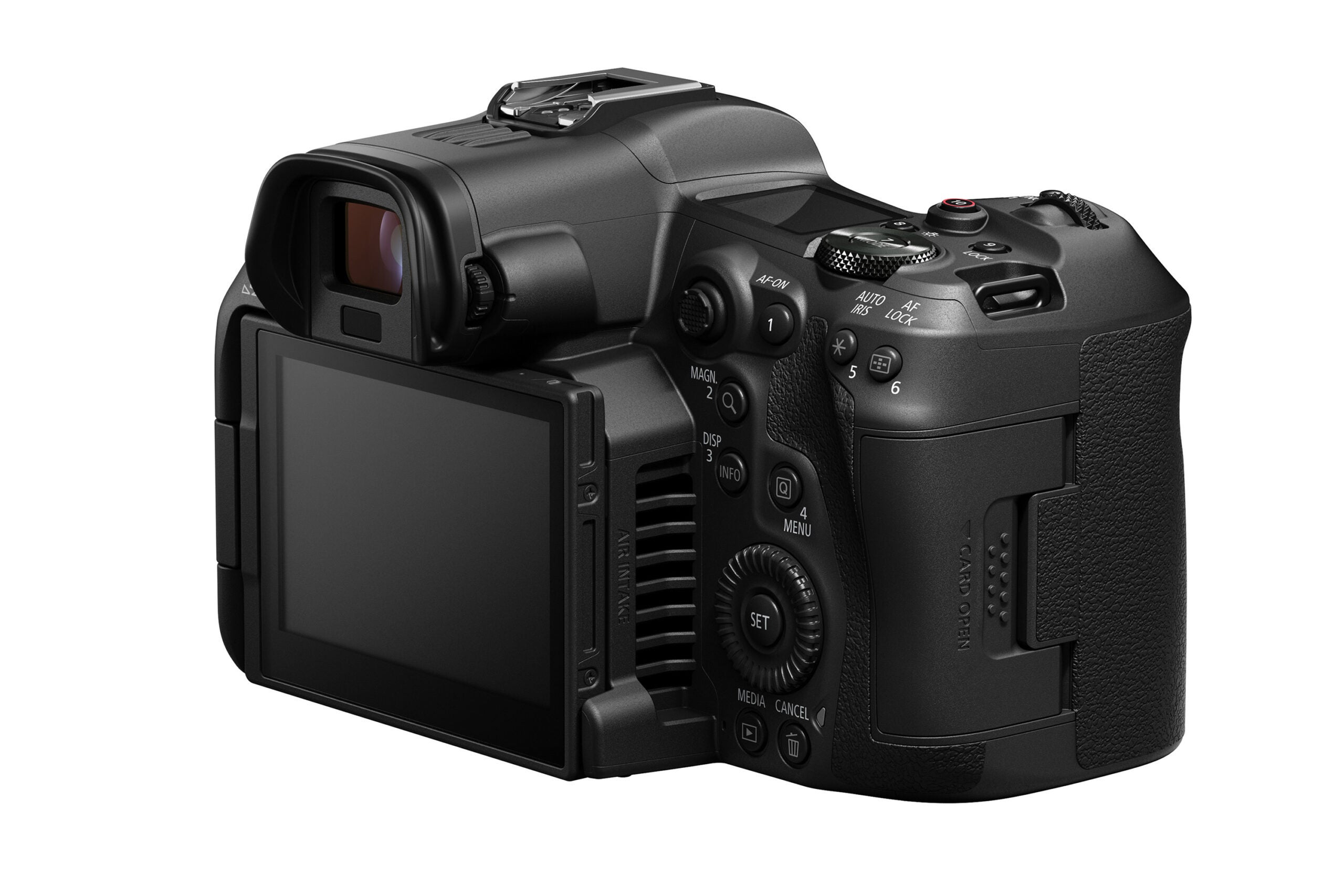
Unlimited 8K video is clearly the standout feature of this new camera. While the EOS R5 can technically shoot 8K, the camera has a tendency to overheat while doing so, requiring long periods of inactivity to cool down. Needless to say, the 8K mode on the R5 is far from usable.
With the EOS R5 C, RAW 8K footage can be captured in 12-bit mode, at up to 60 fps, with no record limit (using Canon’s “Cinema RAW Light” format). The camera can also shoot unlimited 4K/120p video with no crop, in 10-bit mode, with full autofocus.
The new fan on the back—which makes all of the above possible—adds about 1 inch of depth to the camera body and 1.1 ounces of additional weight, compared to the standard R5. But aside from the large rear hump (and a big red shutter button), the two cameras look very similar. The grip is also unchanged, so they likely handle in a similar fashion too.
Other new video features
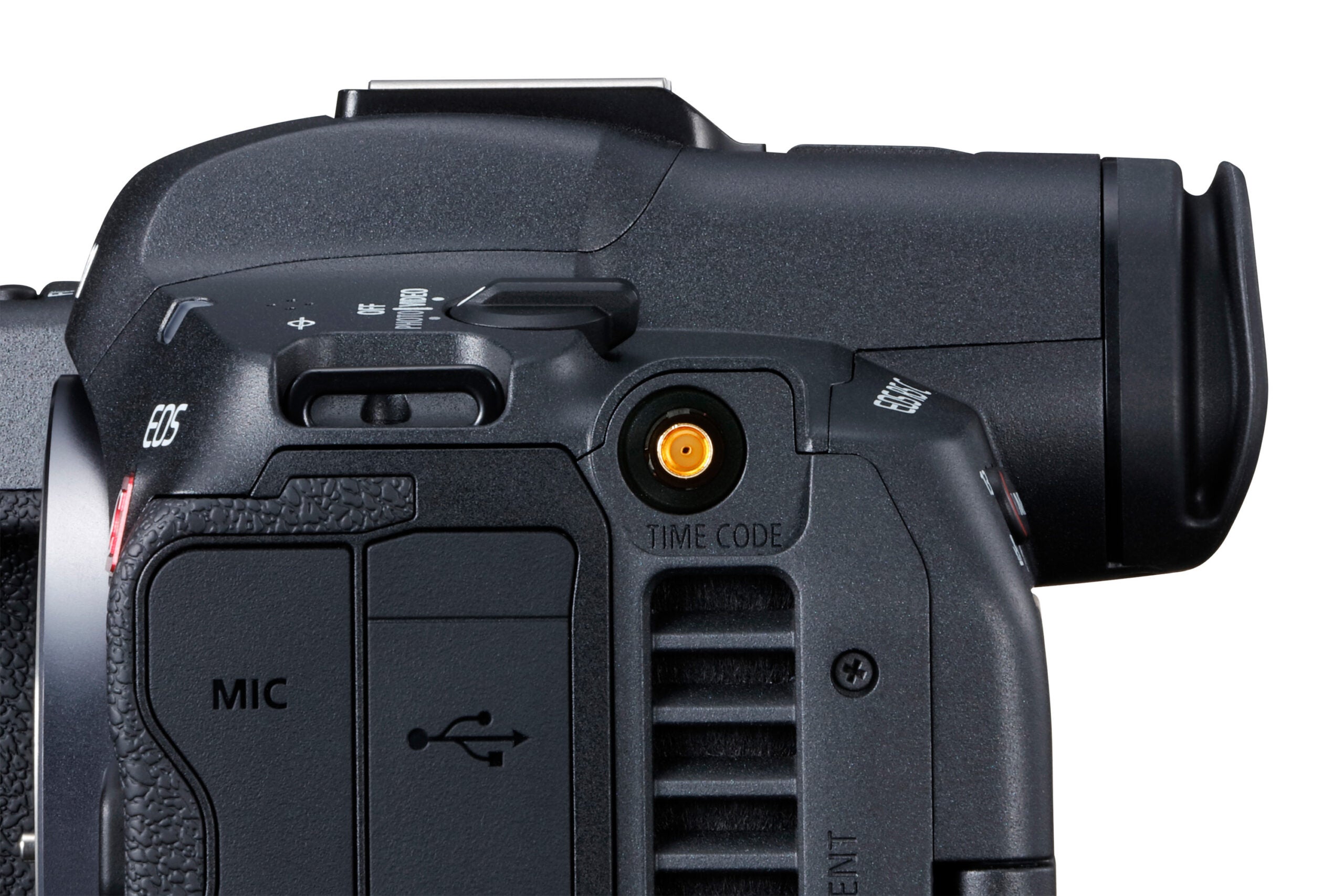
The EOS R5 C gains quite a few features from its EOS Cinema siblings, including 8K HDR capture in Hybrid Log-Gamma (HLG), the ability to shoot Canon Log 3 gamma, ProRes video output at up to 8K/30p, and the ability to record proxy files to an SD card when outputting video to a separate capture device.
It also gains Canon’s multi-function shoe, allowing the R5 C to play nice with various microphones and multi-channel audio solutions. In addition, it includes a timecode terminal, for syncing footage when you’re shooting with multiple cameras. And users now have the ability to assign button functions separately for stills and video capture.
Videos-specific interface
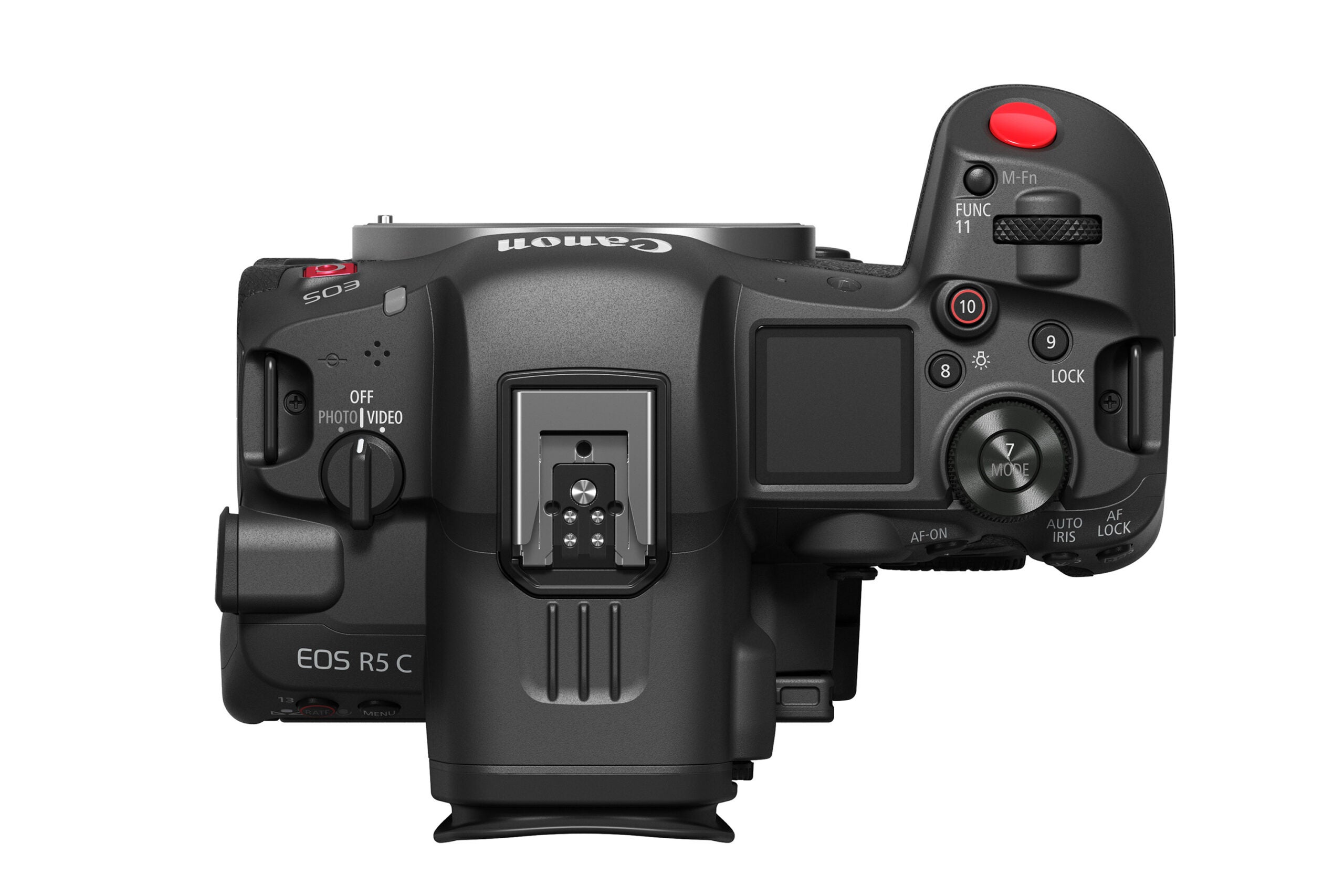
Speaking of customization, one small design change on the EOS R5 C is the addition of a three-way mode selector (Photo/Off/Video). When using the camera in its “photo” mode, users will encounter the standard Canon EOS menus and interface. But in the video mode, the camera brings up the EOS Cinema interface.
No in-body image stabilization
The R5 C sure gains a lot, but unlike the EOS R5, it has no in-body image stabilization. Fortunately, this doesn’t mean you’re entirely out of luck if you want to shoot hand-held. An electronic image stabilization mode works with Canon’s stabilized lenses, to help keep things smooth. But using this feature comes with a 1.1x crop.
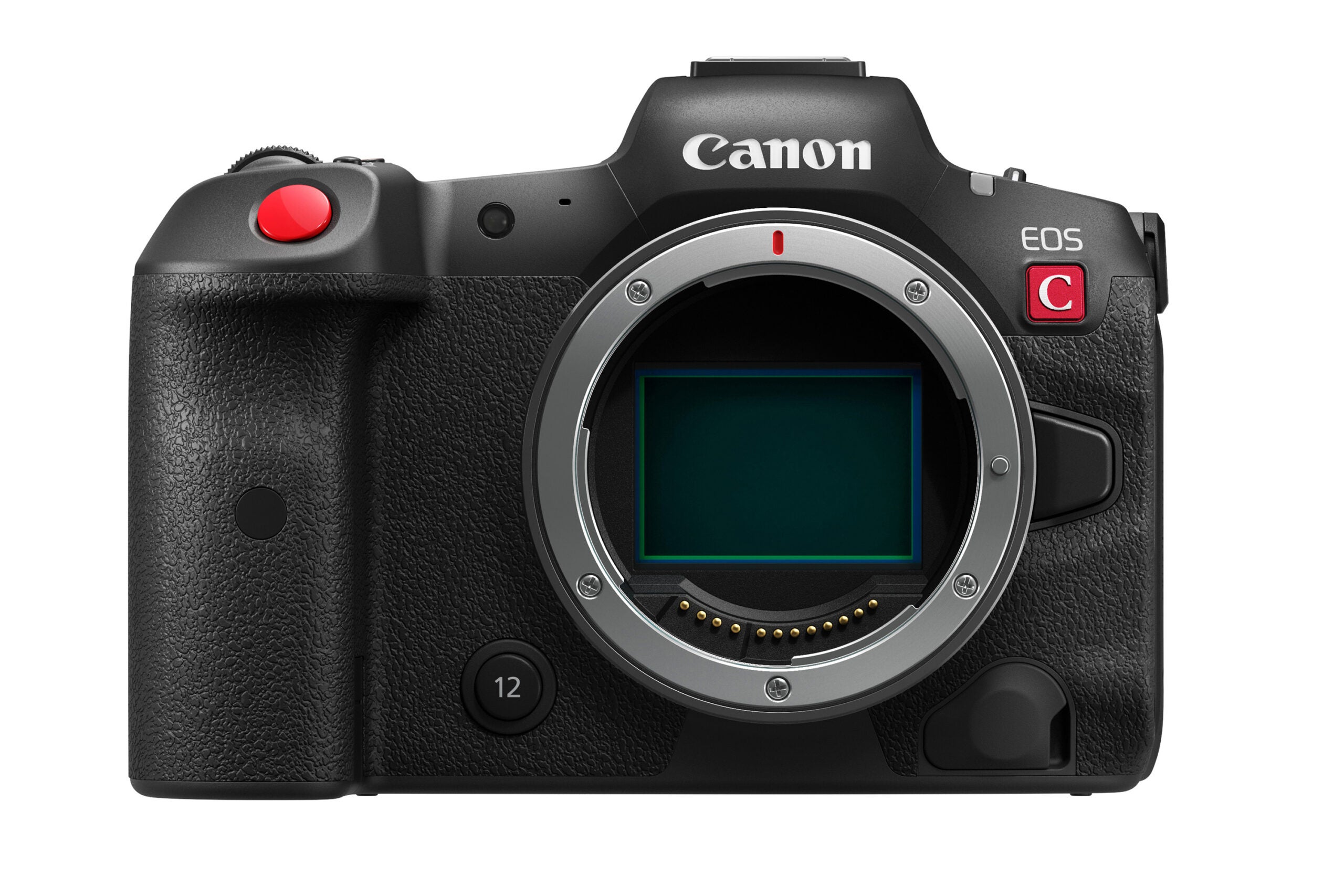
What’s the same as the EOS R5
We’ve covered the key differences between these two siblings. But what about what’s the same? Both cameras sport 45-megapixel CMOS sensors with Canon’s outstanding Dual Pixel autofocus. They both offer the same 5.76-million dot electronic viewfinder and fully-articulating 2.1-million dot rear screen. The button layout, battery, and twin SD+CFexpress are also identical between the two cameras. And both can shoot burst at up to 12 fps using the mechanical shutter and 20 fps using the electronic.
Who’s it for?
In a lot of ways, the EOS R5 C is the camera Canon promised when they originally promoted the EOS R5. It’s a truly 8K-capable cinema camera, that’s equally well-suited for stills captured, whether that be fast-action, portraiture, or anything in-between.
Price and availability
The Canon EOS R5 C will be available in March for $4,499.
The post New gear: The Canon EOS R5 C shoots unlimited 8K video thanks to a giant fan on back appeared first on Popular Photography.